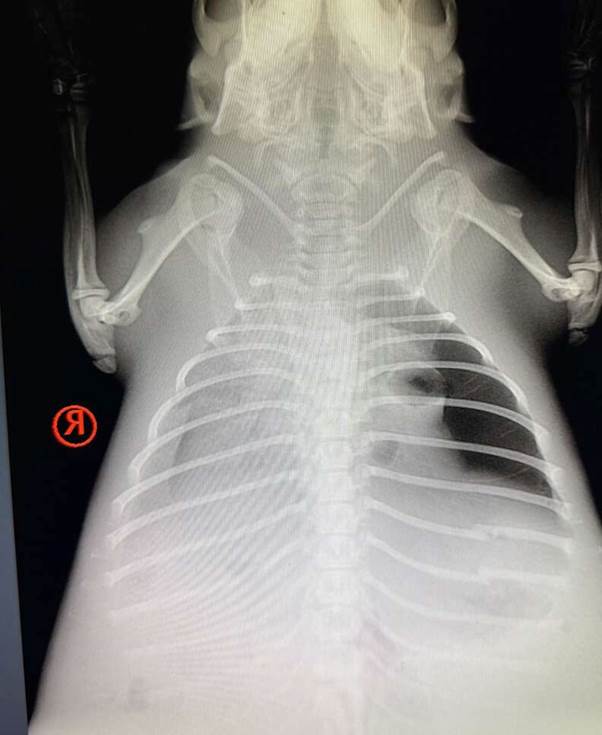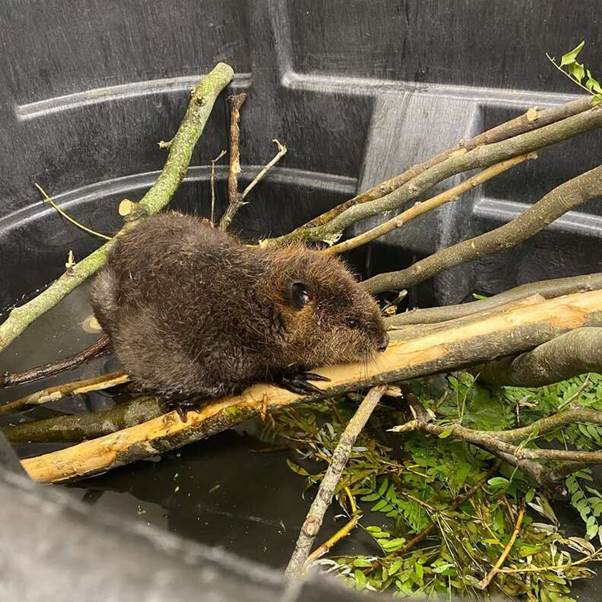When the staff at Loudoun County Animal Services (LCAS) in Virginia came across a baby beaver in the middle of an open field, they knew something was wrong. Beavers are naturally shy, quick-moving creatures, rarely found wandering in the open — especially not far from water. Yet this little one sat slumped and lethargic, unable to scurry away when officers approached.
Her exhaustion and sluggish movements were completely out of character for a wild animal, and alarm bells rang immediately. Concerned for her safety, the officers gently scooped her up and transported her to Kristi’s Caring Hands Wildlife Rehabilitation and Education (KCHWRE), a local facility known for helping injured wildlife.
But when the caregivers there examined her, they realized her condition was far more serious than they could handle. Without hesitation, they arranged a transfer to the Blue Ridge Wildlife Center (BRWC), where she could receive specialized medical care.
It was a crucial decision — one that may have saved the young beaver’s life.

A Critical Diagnosis And A Fighting Chance
At BRWC, the veterinary team quickly assessed the little patient. What they found was heartbreaking. The beaver, likely only a year old, was suffering from severe pneumonia and possible internal trauma.
“On admission, our veterinary team noted that she was weak with labored breathing,” the center shared on Facebook. “X-rays indicated pneumonia or fluid from near-drowning, as well as trauma on the left side.”
The possibility of near-drowning, coupled with the injuries, suggested she had been through a harrowing ordeal — perhaps washed out of her family’s dam during flooding, or caught in a collapse. Whatever had happened, the young beaver’s survival now depended entirely on the dedicated team at BRWC.
Despite the grim findings, the veterinarians were determined to fight for her. They placed her on supportive care, monitoring her around the clock, and giving her every chance to recover.
Even in her fragile state, the little beaver seemed to sense that she was finally safe. One photo captured her lying comfortably, her expression appearing almost like a smile. For many, it was proof that animals — even those unable to speak — can express gratitude in their own ways.
“She looks like she’s smiling,” one supporter, Erin Hurst Edwards Anastasiou, commented online. “She’s grateful to have been rescued.”

Recovery And Signs Of Hope
Over the following days, the baby beaver’s progress was nothing short of inspiring. With antibiotics, fluids, and careful monitoring, her breathing gradually improved, and her appetite slowly returned.
By the end of the week, the team noticed a transformation in her demeanor. No longer withdrawn and lethargic, she began to show curiosity about her surroundings. For the first time since her rescue, she seemed to be regaining the spark of life she had nearly lost.
“We suspect this youngster — likely last year’s baby — was flooded out of their dam or may have even experienced a dam collapse,” BRWC explained. “Her improvement in appetite and demeanor has been remarkable.”
Videos shared by the center showed her nibbling eagerly on fresh greens, her little paws clutching food with renewed strength. For the caregivers, these small signs of progress were powerful reminders of why their work mattered so deeply.
Each day brought new hope that this sweet girl would eventually recover enough to return to the wild.

A New Home And A Second Chance At Life
Within a month, the pneumonia had cleared, her injuries had healed, and her once-fragile body grew stronger. But while her health was no longer in immediate danger, another challenge remained: her long-term care and eventual reintegration into the wild.
Beavers are social animals, and young ones especially benefit from the company of their own kind. Unfortunately, BRWC didn’t have specialized facilities or dedicated enclosures for beavers, as they rarely treated them.
That’s when the Southwest Virginia Wildlife Center of Roanoke (SWVWCR) stepped in. With their expertise and resources, they provided the young beaver with a safe environment and, most importantly, the companionship of other rescued beavers.
“Although her issues have since resolved, it has been a challenge to keep weight on this patient, and beavers this age really need to be with conspecifics in enclosures made for the species,” BRWC shared. “As we do not treat many beavers each year, transferring this patient was the best option.”
Now thriving in her new environment, the once-weak beaver continues to grow stronger each day. She is not yet ready for release, but her caregivers are optimistic. With time, she will be able to return to the wild, ready to build dams and live as nature intended.
Until then, her rescuers say she continues to greet life with that unmistakable “smile” — a reflection of her resilience and the kindness of those who refused to give up on her.
A Village Of Compassion
Her story is more than just one animal’s recovery — it’s also a testament to the power of collaboration. From the quick-thinking officers at LCAS, to the initial care at KCHWRE, to the intensive treatment at BRWC, and finally the transfer to SWVWCR, it truly took a network of dedicated people to save one fragile life.
“We are so fortunate in Virginia to have such an amazing network of permitted wildlife rehabilitators,” BRWC wrote. “It truly takes a village.”
And for this grateful little beaver, that village made all the difference. Against all odds, she now has a second chance at life — one that she seems determined to make the most of.


